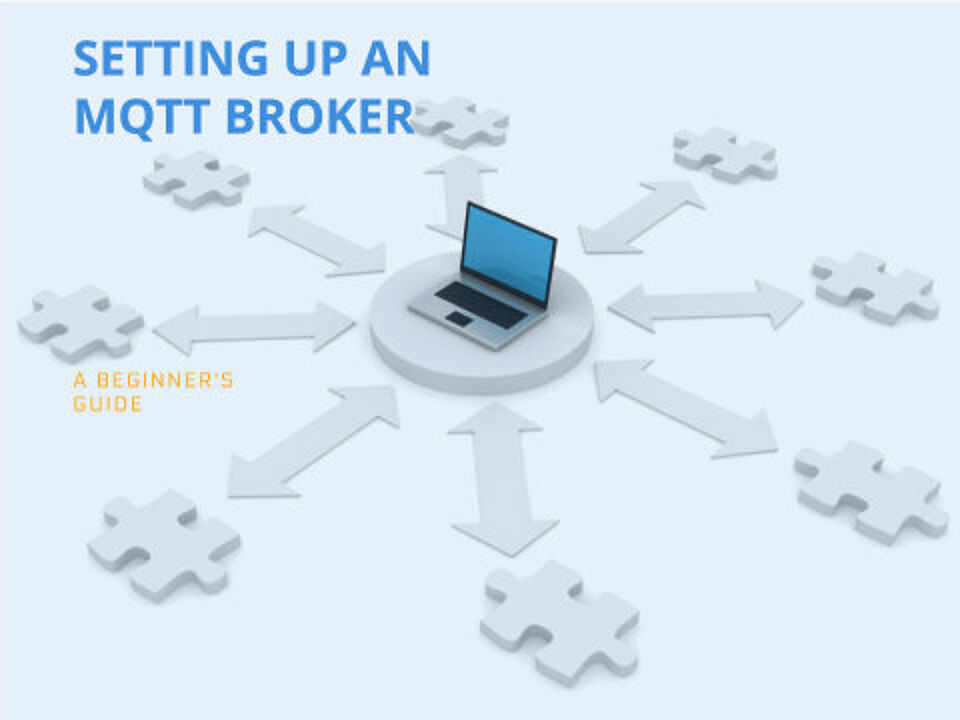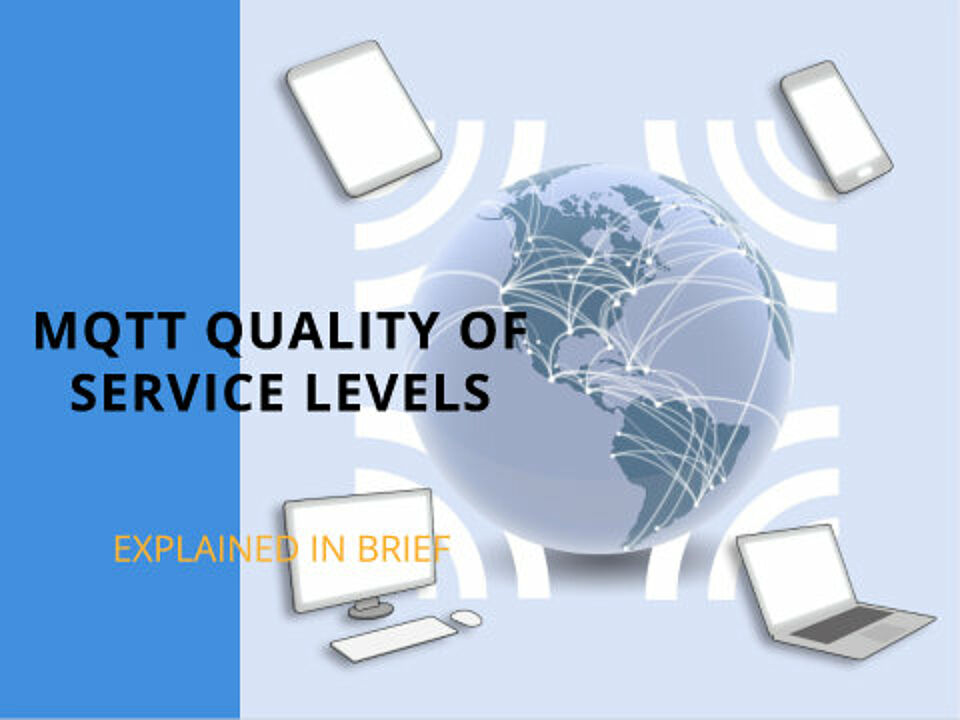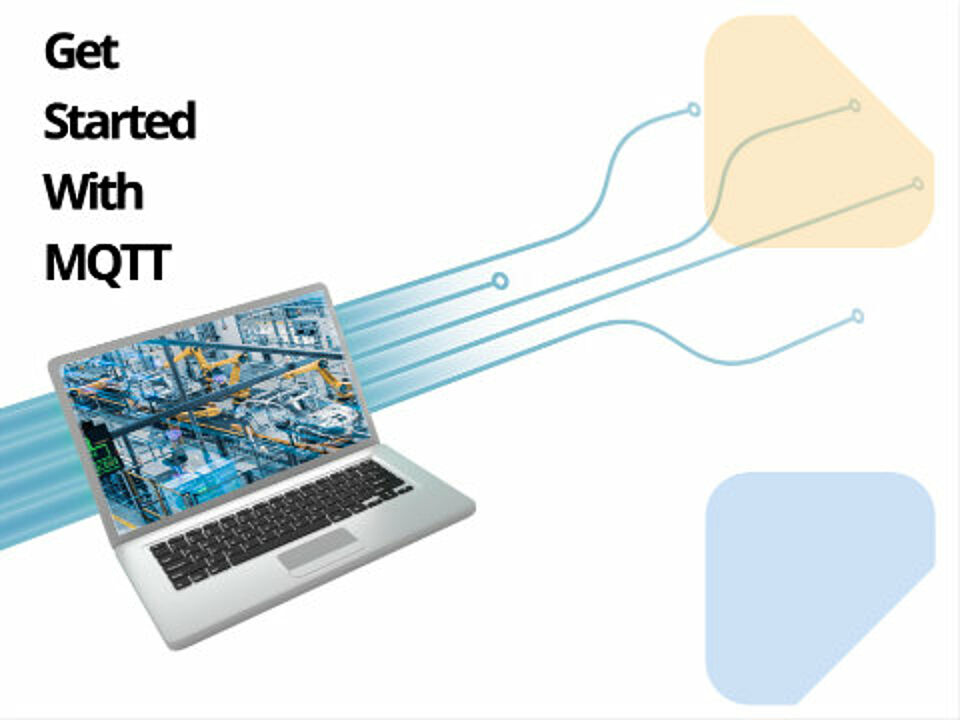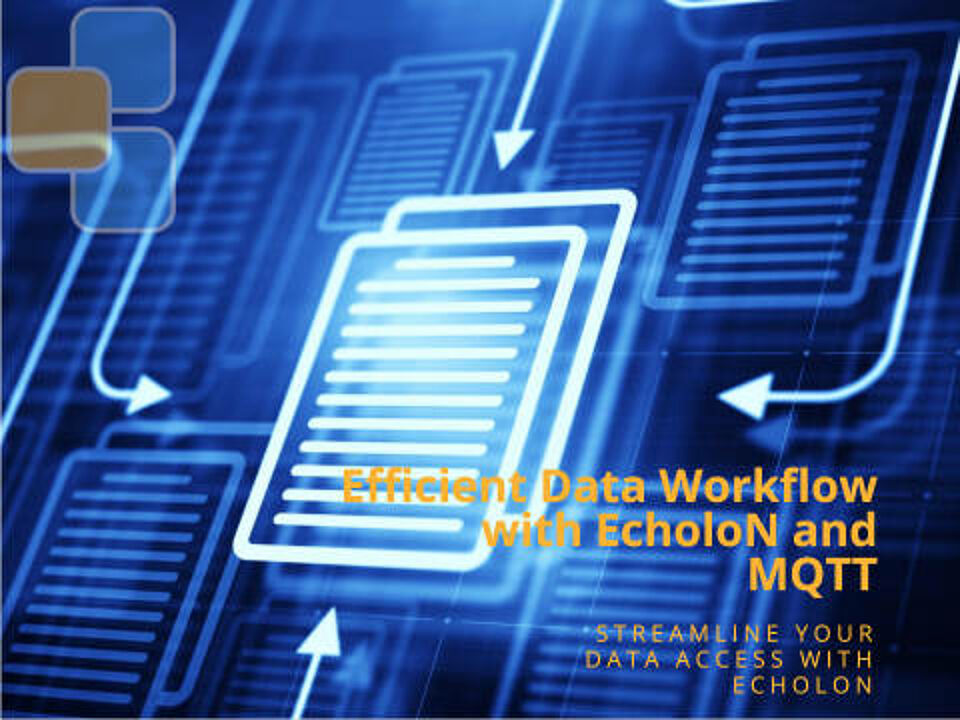
Author: Jochen Möller (Managing Director and CoFounder of EcholoN)
creation: 07.12.2023, last change: 07.07.2025
Table of content
What is MQTT?
How do you set up an MQTT broker?
What quality of service level (QoS) does MQTT support?
What is the significance of MQTT in the Internet of Things?
MQTT in industrial use - M2M
Practical steps for getting started with MQTT
Frequently asked questions - FAQs
EcholoN and MQTT
The MQTT protocol has established itself as one of the most important communication protocols in the Internet of Things - IoT. It enables the reliable and efficient transmission of messages between clients and brokers.
In this article, we will take a closer look at MQTT and its basics, learn how to set up an MQTT broker, the different quality of service levels of MQTT and the importance of MQTT in the IoT.
What is MQTT?
What are the basics of MQTT?
MQTT stands for Message Queuing Telemetry Transport and is an extremely resource-efficient protocol that was developed specifically for communication via MQTT in network-weak or energy-efficient environments. It is ideal for devices that have only limited computing power and bandwidth available, such as sensors, actuators and other IoT devices. MQTT was originally developed for critical infrastructures, but is now established as a universal protocol for the Internet. Its compact header and the ability to keep connections open permanently or quickly re-establish them when needed make it a particularly reliable messaging protocol.
What role does MQTT play in the Internet of Things (IoT)?
In the Internet of Things (IoT), MQTT enables scalable and stable message exchange between devices, even if they are geographically distant or temporarily offline. Especially in industrial contexts – such as the oil and gas industry – it guarantees continuous data transmission. Devices can send data via MQTT over TCP/IP, with each device acting as either a publisher or subscriber. MQTT thus ensures that a message is delivered multiple times or exactly once, depending on the selected QoS level. This subscription system allows information to be filtered and distributed in a targeted manner.
How does communication with MQTT work?
The task of the broker is to efficiently forward messages to the subscribers. A device – such as an MQ Integrator SCADA Device – sends a message via a so-called topic. Other clients that have subscribed to this topic receive the data as soon as it is available. Usernames and passwords can be used to connect to the MQTT broker and verify the authenticity of the devices. This simple but effective principle allows thousands of devices to communicate directly with each other without having to know the recipients. This minimises the complexity of device management and maximises flexibility for developers and users.

How do you set up an MQTT broker?
What options are there for an MQTT broker?
There are various options for setting up an MQTT broker. Some popular MQTT brokers are Mosquitto, IBM MQ and AWS IoT Core. These brokers offer extensive features such as authentication and authorisation to ensure the security of communication.
How do I connect to an MQTT broker?
To establish a connection to an MQTT broker, the client needs the address of the broker and a unique client name. The client can then establish a connection to the broker and send or receive messages.
How are MQTT messages sent and received?
MQTT messages are sent and received via publish and subscribe actions. A publisher sends a message to a specific topic, while a subscriber subscribes to that topic and receives the messages that are published on that topic.

What quality of service level (QoS) does MQTT support?
What does QoS mean in the context of MQTT?
Quality of Service refers to the reliability of message transmission. MQTT supports various QoS levels that determine how messages are sent and received.
Which QoS levels are available and how do they work?
MQTT supports three QoS levels: QoS 0 (At most once), QoS 1 (At least once) and QoS 2 (Exactly once). With QoS 0, a message is transmitted minimally without confirmation or retransmission. With QoS 1, the message is transmitted at least once to ensure that it arrives, but can be received several times. With QoS 2, the message is transmitted exactly once and acknowledgements of receipt are used to ensure that the transmission was successful.
What are the advantages and disadvantages of the different QoS levels?
The advantage of QoS 0 is the minimal transmission, which minimises the bandwidth and computing power of the broker and clients. The disadvantage, however, is that there is no acknowledgement or retransmission, which can lead to potential data loss. QoS 1 ensures reliable transmission but does not guarantee the delivery order of messages. QoS 2 ensures that the messages are transmitted exactly once and in the correct order, but requires more bandwidth and computing power.

What is the significance of MQTT in the Internet of Things?
How is MQTT used in the IoT?
MQTT is widely used in the IoT as it enables efficient and reliable communication between IoT devices. It is used for various applications, such as the transmission of sensor data, the control of actuators and the monitoring of devices in the IoT network.
What advantages does MQTT offer compared to other protocols in the IoT?
MQTT offers several advantages compared to other protocols in the IoT. It is lightweight and requires little bandwidth and computing power. It also supports the scaling of IoT devices and enables reliable and secure communication. MQTT is supported and further developed by various organisations such as OASIS, IBM and Cirrus Link Solutions, making it a reliable and widely used protocol for the Internet of Things.

MQTT in industrial use - M2M
Industry benefits immensely from the flexibility and reliability that MQTT offers. It is not only a tool for increasing efficiency, but also an essential component for analysing and managing processes in Industry 4.0.
MQTT brokers and their role in industry
Industrial MQTT brokers must be particularly powerful and secure. Mosquitto or HiveMQ, for example, is a popular choice as it can be seamlessly integrated into existing systems and supports high throughput volumes.
MQTT topics and their significance for automation
In industrial automation, the topic ensures clear and structured data transfer. This allows processes to be monitored and controlled in a targeted manner. The correct naming and structure of the topic architecture is crucial for successful implementation.
MQTT client in the industry - networked intelligence
Connecting devices as MQTT clients creates networked intelligence that goes far beyond the boundaries of individual machines. The clients enable efficient data transmission and thus help to improve the understanding and control of industrial processes.

Practical steps for getting started with MQTT
Getting started with MQTT is straightforward thanks to resources such as HiveMQ and the EcholoN Dataworkflow System. These tools offer an intuitive interface and a wide range of configuration options to ensure seamless integration into existing systems and applications. An MQTT-based dataflow can be set up within a short time and offers immediate benefits for network management and information exchange.Those who want to use MQ Telemetry Transport effectively benefit from the fact that MQTT has a minimalist protocol that is easy to implement and powerful at the same time.
A key success factor is understanding the MQTT protocol itself: It is based on a publish/subscribe model in which devices can send (publish) or receive (subscribe) data. The big advantage is that senders and receivers do not have to communicate directly with each other. Instead, the broker takes care of organising and distributing the broker messages. Clients can flexibly focus on specific topics and receive individual messages that are relevant to their function.
Tips for successful MQTT implementation
When implementing MQTT, a few key points should always be taken into account:
- Choose a scalable and secure MQTT broker that meets your requirements.
- Structure your MQTT topics carefully and use hierarchies and wildcards to optimise message distribution.
- Define a clear QoS strategy according to the requirements of your application.
- Implement effective subscription management to control system load and enable targeted communication.
- Use targeted publish strategies to distribute data efficiently and effectively.
- Pay attention to security aspects such as encryption and authentication.
- Use MQTT clients that fully support the protocol to ensure interoperability.
- Plan sufficient monitoring and logging to be able to track the message flow.
Frequently asked questions - FAQs
What is the role of the broker in the MQTT protocol?
The broker is a central component in the MQTT protocol that manages the forwarding of messages between the clients. It receives, stores and forwards the messages to the corresponding recipients.
In which areas is MQTT suitable for use?
MQTT is particularly suitable for applications in the IoT area, such as in networked sensor networks, monitoring systems, smart home devices and industrial plants, where reliable and efficient communication between devices is required.
How is a connection to the MQTT broker established?
To establish a connection to the MQTT broker, a client needs the address of the broker and the corresponding login information. With this data, the client can establish a connection to the broker and send or receive messages.
How does MQTT ensure communication security?
MQTT uses user names and passwords for authentication when establishing a connection between the client and broker to ensure security. Communication can also be secured via SSL/TLS. It has been standardised by the Organisation for the Advancement of Structured Information Standards (OASIS) to optimise communication in IoT applications.
What advantages does MQTT offer over other protocols?
MQTT offers advantages such as low bandwidth and high reliability in unreliable networks. It was originally developed to efficiently transfer telemetry data and is ideal for applications with low bandwidth and high latency.
What are the advantages of MQTT over other protocols in the IoT?
MQTT is characterised by its light weight, its minimal network bandwidth requirements and its precision in the transmission of messages, which makes it particularly efficient for use in the IoT area.
Which QoS levels are supported by MQTT?
MQTT supports Quality of Service (QoS) levels 0, 1 and 2. These levels define the reliability and confirmation of message transmissions between the client and the broker.
How is message delivery handled in the MQTT protocol?
In the MQTT protocol, message delivery is managed by the broker, which ensures that messages reach the intended recipient. Clients can also confirm the delivery of messages with the broker to ensure that they have been delivered.
Which known implementations and tools are compatible with the MQTT protocol?
There are various implementations and tools that are compatible with the MQTT protocol, including the well-known broker "Mosquitto". In addition, there are a large number of MQTT clients that enable the protocol to be used in various applications.

EcholoN and MQTT
The EcholoN data workflow system has MQTT data access
The EcholoN Data Workflow System (DWS), a classic ETL tool, is a powerful solution for data integration. With a user-friendly interface, it enables the seamless connection of different data sources and destinations to ensure a smooth and automated data flow.
EcholoN and MQTT are important elements in the data traffic of the Internet of Things and other message streams. The "InsertWithoutSearch" function is used to send messages from EcholoN via MQTT, as there is nothing to search for in the target. The payload is compiled and then sent to the broker via "ByteArrayToStringConnector", also UTF-encoded.
An important aspect when using MQTT is participation in the data traffic of the Internet of Things. EcholoN makes it possible to monitor field watcher events and send corresponding messages via the MQTT protocol. The concept of the topic also plays a decisive role in organising and managing the various message streams. Overall, the connection between EcholoN and MQTT is of great importance to ensure efficient and reliable communication in the Internet of Things.
Conclusion - The future is connected
MQTT plays an important role in the networked world of IoT. Its simple and flexible architecture makes it an indispensable tool for modern machine-to-machine (M2M) and IoT communication. With the right expertise and careful implementation, organisations can harness the power of MQTT to create more efficient and intelligent systems with potential as far-reaching as the Internet of Things itself.
Next steps and resources
When you're ready to explore the many possibilities of MQTT in your enterprise network, start with a reliable broker like Mosquitto and test communication with MQTT-enabled devices. Use online tutorials to help you get started and keep up to date with the latest developments and best practices in this ever-evolving field with our newsletter.
By finishing this article on MQTT, you'll be well on your way to taking the networking of your IoT devices to the next level. Take up the challenge and let MQTT transform your network!
Do you have questions about MQTT or would you like specific information about MQTT implementations in your company? Get in touch with us! We offer professional advice and practical solutions for your IoT challenges. Let's create a smart, connected future together.
Maybe also interesting:
- Blog article: Microservices, Micro-Prozesse and API
- Blog article: Daten integration / DI / ETL
- Blog article: What is M2M? - Machine to Machine - Communication
- Blog article: Industry 4.0 - technology, benefits and challenges
- Blog article: What is GraphQL?
- Blog article: What is a WebHook? - Examples and use cases of WebHooks
- RFID for Smart Equipment
